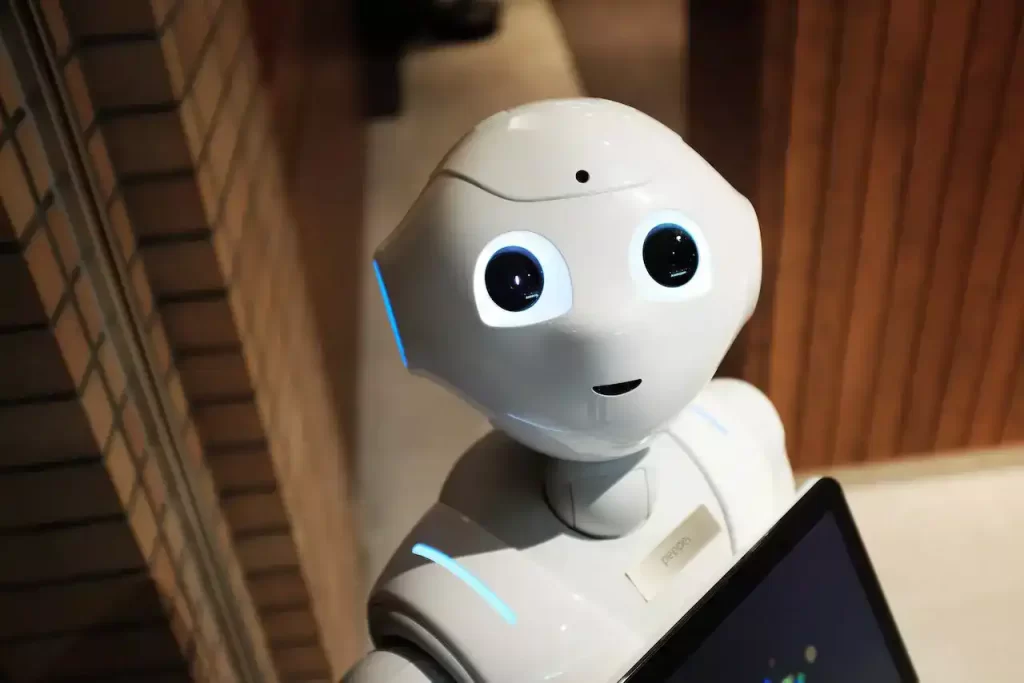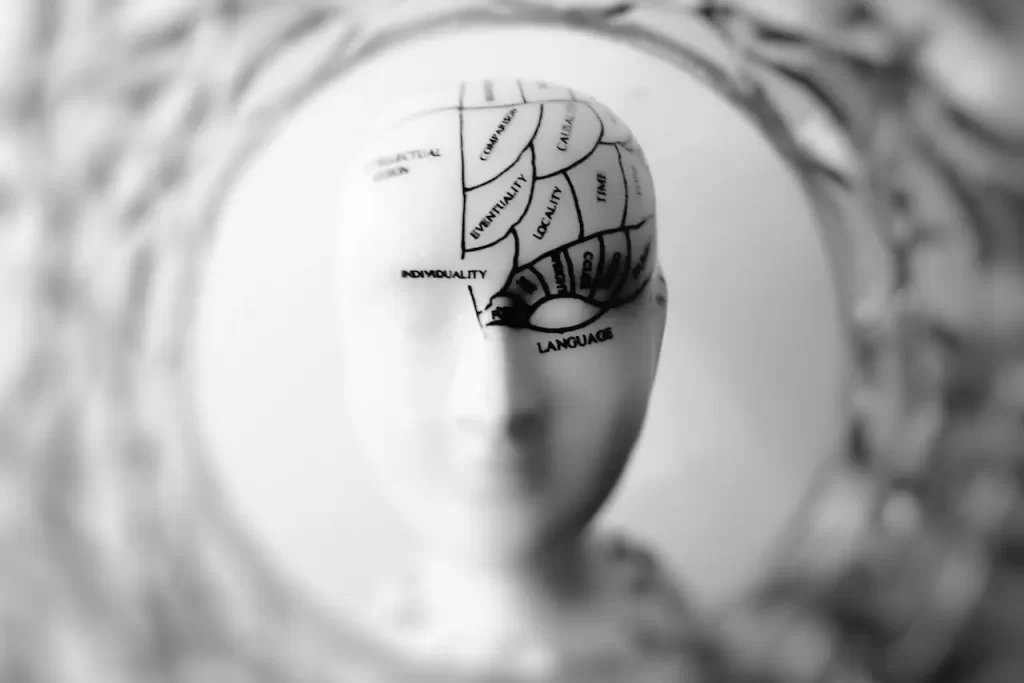Are you curious about what the future holds for us? As we move towards 2050, the world is rapidly changing and progressing. In this article, we’ll take a look at the 12 amazing things that could happen by 2050.
This article aims to inspire you with the possibilities of the future and bring a positive outlook towards it. We will explore advancements in technology, medicine, energy, and environmental sustainability that could revolutionize our world.
You might wonder why we chose 2050 as the timeline for our predictions. Well, this date serves as a marker for global progress and development as it is the deadline for many countries to achieve the United Nations Sustainable Development Goals. These goals aim to eradicate poverty, hunger, and disease while promoting equality and protecting the environment.
In this article, we will cover a broad range of topics that could shape our future. From self-driving cars to sustainable cities, we’ll discuss the most innovative and transformative developments that could impact our daily lives.
So, let’s dive into the exciting world of the future and explore the 12 amazing things that could happen by 2050. Join us on this journey of discovery and be prepared to be amazed by what the future has in store for us!
AI and Robotics
One of the most amazing things that can happen by 2050 is the incredible advancements in Artificial Intelligence (AI) and robotics. We are already seeing the use of AI and robotics in various industries such as healthcare, manufacturing, and transportation, and these fields are only expected to grow in the coming years.
The potential impact of AI and robotics on the job market and society as a whole is immense. While some jobs may become obsolete, new jobs are also being created in the field of AI and robotics. These technologies have the potential to revolutionize the way we live and work, making our lives easier and more efficient than ever before.
Imagine having a robot assistant that can do your laundry, cook your meals, and clean your house for you. Or, having a self-driving car that can safely take you to your destination without any human intervention. These are just a few examples of the possibilities that AI and robotics can offer us in the future.
However, there are also potential concerns surrounding the use of AI and robotics. For example, some experts have raised questions about the potential loss of jobs and the ethical considerations of creating machines that can think and act like humans. It’s important to consider these issues as we continue to develop and implement these technologies.
Overall, the advancements in AI and robotics are truly amazing, and we can only imagine what the future holds. Whether you’re excited or apprehensive, there’s no denying that this is a fascinating and rapidly evolving field that is sure to have a profound impact on our lives in the coming decades.
Renewable Energy
Renewable energy has been gaining momentum in recent years as a viable alternative to fossil fuels. As we move closer to 2050, the world is likely to see a significant transition towards renewable energy sources such as solar and wind power.
The benefits of renewable energy are clear – it is sustainable, environmentally friendly, and has the potential to create new jobs and industries. However, the transition is not without its challenges. One of the main issues is the cost of implementing and scaling renewable energy solutions, which can be expensive.
Another challenge is the integration of renewable energy into existing infrastructure, such as power grids. This requires careful planning and investment to ensure that the transition is smooth and efficient.
Despite these challenges, the potential benefits of renewable energy are too great to ignore. In addition to reducing carbon emissions and combating climate change, renewable energy can also help to stimulate economic growth and create new opportunities for businesses and individuals.
As we move closer to 2050, it will be interesting to see how renewable energy develops and how it will shape the future of our planet. Will we be able to overcome the challenges and fully embrace renewable energy? Only time will tell, but the potential benefits are certainly worth striving for.
Space Exploration
Let’s blast off into our next point, which is all about space exploration. It’s no secret that humans have always been fascinated with the vastness of space and what secrets it holds. With more resources being dedicated to space exploration, we can expect some amazing things to happen by 2050.
Governments and private entities are already investing heavily in space exploration programs, and this trend is expected to continue in the coming decades. The potential for new discoveries is massive, from finding new planets and stars to uncovering the mysteries of the universe.
Moreover, advancements in technology have made it easier to explore space and collect data. We can expect more sophisticated and powerful telescopes, space probes, and rovers in the near future, which can provide us with a better understanding of our universe.
However, with these exciting prospects come some significant challenges and risks. Space exploration is an expensive and dangerous undertaking, and accidents can occur. Also, there are concerns about the long-term effects of space exploration on the environment and the potential for conflicts over resources.
Despite these challenges, the benefits of space exploration are undeniable. From enhancing our understanding of the universe to inspiring future generations to dream big, the potential impact of space exploration is vast. Who knows what we might find out there?
Self-driving Cars
Self-driving cars are no longer a thing of the future – they are becoming a reality. With advancements in artificial intelligence and sensors, autonomous vehicles are being developed and tested by major car manufacturers and technology companies. In this section, we’ll explore the potential impact of self-driving cars on transportation and society.
Firstly, self-driving cars have the potential to revolutionize transportation. They could improve road safety, reduce traffic congestion, and increase efficiency on the roads. Autonomous vehicles can communicate with each other and respond to changing road conditions more effectively than human drivers, leading to fewer accidents and less congestion on the roads.
Secondly, self-driving cars could also have significant environmental benefits. Electric self-driving cars can reduce carbon emissions, particularly in urban areas where emissions from traditional cars are a significant contributor to pollution.
However, the adoption of self-driving cars is not without its challenges. There are still significant technological, regulatory, and ethical issues that need to be addressed. For example, who will be responsible if a self-driving car gets into an accident? How will insurance policies need to change to account for the increased safety of autonomous vehicles?
Additionally, there are ethical considerations to be addressed, such as the decision-making processes of self-driving cars in emergency situations. For example, if an accident is unavoidable, should the car prioritize the safety of its passengers or of pedestrians?
Self-driving cars have the potential to revolutionize transportation and have significant benefits for safety, the environment, and efficiency. However, there are still many challenges that need to be addressed before they become a widespread reality.
Virtual and Augmented Reality
Virtual and augmented reality are not new concepts, but recent advancements have opened up exciting possibilities for these technologies. With more advanced hardware and software, virtual and augmented reality experiences are becoming more immersive and realistic. The potential applications for these technologies are vast and varied.
One of the most obvious applications for virtual and augmented reality is in entertainment. We are already seeing the use of virtual reality in gaming, but the potential goes beyond that. Imagine being able to attend a concert or sports game from the comfort of your own home, with a virtual reality headset providing an almost lifelike experience. Augmented reality can also be used in live performances, adding digital elements to a real-world setting.
Education is another area where virtual and augmented reality can have a significant impact. Imagine being able to visit historical landmarks, explore the human body, or even travel through space through a virtual reality headset. Augmented reality can also be used to enhance traditional learning methods, providing interactive and engaging experiences for students.
However, as with any new technology, there are potential downsides to consider. The increasing use of virtual and augmented reality may impact social interactions and human experiences. It is essential to consider the ethical implications of these technologies and how they may shape our future.
The development of more advanced virtual and augmented reality technologies is an exciting prospect with endless possibilities. As we continue to explore and refine these technologies, we may discover even more ways to apply them in our daily lives.
Biotechnology
Biotechnology is a field that has seen incredible advancements in recent years, and it’s only getting more exciting as we move towards 2050. One of the most groundbreaking areas of biotech is gene editing, which holds the potential for cures to genetic diseases and personalized treatments.
Thanks to CRISPR and other gene editing technologies, scientists can now make precise changes to DNA, which could lead to cures for conditions that were previously considered untreatable. While this technology has the potential to revolutionize healthcare, there are also ethical considerations to take into account. For example, there are concerns about the potential misuse of gene editing, and questions around who should have access to these technologies.
Another exciting area of biotech is personalized medicine. With advancements in genetics, doctors are now able to tailor treatments to an individual’s genetic makeup, making treatment more effective and efficient. This could be a game-changer for diseases such as cancer, where personalized treatments could vastly improve patient outcomes.
Of course, as with any new technology, there are also challenges that come with biotech. For example, there are concerns around privacy and data security when it comes to genetic information. Additionally, there are ethical considerations around the use of genetic information, and how it should be shared or protected.
Despite these challenges, the potential of biotechnology is immense. As we move towards 2050, it’s exciting to think about the impact that gene editing and personalized medicine could have on healthcare and our lives.
Quantum Computing
Are you familiar with quantum computing? If not, you’re in for a treat! Quantum computing is one of the most fascinating areas of technology that is rapidly developing and has the potential to revolutionize our world as we know it.
Quantum computers use qubits instead of traditional bits, allowing for a much greater capacity to process information at an incredibly fast rate. This means that tasks that currently take conventional computers years to solve, can be solved by quantum computers in just seconds!
The potential applications for quantum computing are endless. It could help us solve problems related to climate change, develop new drugs, and create new materials that could change the world. However, there are also some challenges and limitations associated with quantum computing.
One of the biggest challenges is that quantum computers are very sensitive and susceptible to errors caused by environmental noise. Therefore, they require a very stable environment and must be kept at extremely low temperatures. Additionally, quantum computers are still in the early stages of development and are currently very expensive to build and maintain.
Despite these challenges, many experts believe that quantum computing has the potential to be one of the most significant technological breakthroughs of the 21st century. So, keep an eye out for the latest developments in quantum computing because they could change the world as we know it!
3D Printing
Are you familiar with 3D printing? If not, you’re in for a treat. This technology has been around for a while, but it’s still making waves in various industries.
One of the most significant advantages of 3D printing is its ability to create complex shapes and designs that traditional manufacturing methods may not be able to achieve. This makes it a game-changer in fields such as healthcare, where 3D printing can be used to create customized implants and prosthetics. It also has applications in architecture and construction, where it can be used to print building components such as walls and roofs.
Another benefit of 3D printing is its potential for sustainability. By using materials such as recycled plastic, 3D printing can reduce waste and energy consumption compared to traditional manufacturing. This can have a positive impact on the environment and help address the global issue of plastic waste.
But 3D printing also poses challenges, particularly in terms of intellectual property and regulation. As the technology becomes more accessible, there is a risk of intellectual property infringement, as well as safety concerns around the use of 3D-printed products. This requires careful consideration and regulation to ensure that 3D printing can continue to be a force for good.
Overall, 3D printing has the potential to revolutionize manufacturing and have a significant impact on various industries. Its ability to create complex designs, customize products, and reduce waste makes it an exciting technology to watch as it continues to evolve.
Hyperloop Transportation
It’s a futuristic transportation system that has been making waves in recent years. The idea behind it is to create a high-speed train that can travel at near-supersonic speeds in a vacuum-sealed tube. The technology has been in development for several years now, with some companies hoping to launch commercial operations in the near future.
The potential benefits of the Hyperloop are numerous. For one, it would greatly reduce travel times between cities, making it possible to commute longer distances without sacrificing too much time. It would also be much more environmentally friendly than traditional forms of transportation like cars and airplanes, as it would run on electricity and generate no emissions.
But there are also significant challenges to implementing and scaling the Hyperloop. For one, it requires a significant amount of infrastructure to be built, including the tube network and stations. Additionally, there are technical challenges to designing a system that can safely transport people at such high speeds. And finally, there are regulatory and legal challenges to consider, as the technology is so new and untested.
Despite these challenges, many companies are still investing in the technology and hope to make it a reality in the near future. If successful, the Hyperloop could revolutionize the way we travel and usher in a new era of high-speed transportation.
Smart Cities
Have you ever heard of the term “smart cities”? It’s a relatively new concept, but one that has the potential to revolutionize urban living. Essentially, a smart city is a city that uses advanced technology to manage and optimize its systems and infrastructure. This includes everything from traffic lights and streetlights to public transportation and waste management.
The development of smart city technologies, such as the internet of things (IoT) devices, has the potential to greatly improve urban planning, infrastructure, and sustainability. Imagine a city where traffic lights adjust in real-time to ease congestion, public transportation is automated and efficient, and waste management is optimized to reduce environmental impact. It’s not hard to see why smart cities are so appealing.
However, there are also challenges to implementing and securing smart city technologies. One major concern is privacy and security. With so much data being collected and shared, it’s important to ensure that personal information is protected and that systems are not vulnerable to cyber attacks.
Another challenge is the cost of implementing these technologies. It can be expensive to upgrade existing infrastructure and systems, and not all cities have the financial resources to do so. Additionally, there is the challenge of ensuring that these technologies are accessible to all residents, regardless of income level or location.
Despite these challenges, the potential benefits of smart city technologies make it a field worth exploring. With the right investment and planning, smart cities could transform the way we live, work, and interact with our environments.
Synthetic Foods
Synthetic foods may not sound appetizing at first, but it’s actually an exciting new development in the world of food! With concerns about food security and sustainability on the rise, scientists and researchers are exploring alternative ways to produce food, and synthetic foods are one of them.
Synthetic foods are essentially created in a lab, using a combination of plant-based proteins, fibers, and other ingredients. These foods can range from meat alternatives to dairy-free milk to even plant-based eggs. They’re created to mimic the taste and texture of traditional foods, while also being more sustainable and environmentally friendly.
One of the biggest benefits of synthetic foods is their potential to address food insecurity. With a growing global population, it’s becoming increasingly difficult to produce enough food to feed everyone. Synthetic foods can be produced more efficiently and with less land, water, and other resources than traditional agriculture. This means we can potentially feed more people with less strain on the planet.
Another benefit of synthetic foods is their potential to reduce the environmental impact of food production. Traditional agriculture is a major contributor to greenhouse gas emissions, water pollution, and deforestation. Synthetic foods can be produced with less waste and fewer emissions, making them a more sustainable option.
However, with any new technology, there are also ethical and social implications to consider. Some people may be uncomfortable with the idea of eating foods that are created in a lab, and there are questions about the long-term health effects of consuming synthetic foods. Additionally, the development of synthetic foods may further consolidate the food industry and reduce diversity in our food sources.
Overall, synthetic foods have the potential to be a game-changer in the world of food. While there are still many questions to be answered, it’s exciting to see how this technology can help us address some of the biggest challenges facing our food system today.
Quantum Cryptography
With the increasing reliance on the internet for communication, the need for secure and private information transmission has never been greater. Traditional encryption methods that rely on mathematical algorithms are vulnerable to attacks by hackers with powerful computers. This is where quantum cryptography comes in.
Quantum cryptography uses the principles of quantum mechanics to create an unbreakable method of encryption. This is achieved through the use of quantum keys, which are created by sending photons of light through a fiber optic cable. The photons are in a state of superposition, meaning they exist in multiple states simultaneously. This makes it impossible for a hacker to intercept the key without being detected.
One of the most exciting applications of quantum cryptography is in the field of quantum key distribution (QKD). QKD allows for secure communication between two parties without the risk of interception or decryption. This technology has the potential to be used in industries such as finance, healthcare, and government, where secure communication is of the utmost importance.
However, there are some challenges and limitations to the use of quantum cryptography. For example, the transmission of quantum keys over long distances is still a challenge, as the photons can be easily absorbed by the fiber optic cable. Additionally, the cost of quantum cryptography is currently quite high, making it difficult to implement on a large scale.
Quantum cryptography is a fascinating field that has the potential to revolutionize cybersecurity and data privacy. While there are still some challenges and limitations to overcome, the future looks bright for this cutting-edge technology.
Conclusion
And there you have it, folks! We’ve covered 12 amazing technological advancements that could happen by 2050. Let’s take a moment to recap some of the highlights.
First, we looked at artificial intelligence and the potential for more advanced and ethical AI systems. Next, we explored the possibilities of nanotechnology and how it could revolutionize industries such as medicine and manufacturing. Then, we discussed the possibilities of fusion energy and its potential to provide a clean and sustainable source of energy.
We also talked about the exciting advancements in space exploration and the potential for space tourism. Virtual and augmented reality technology, biotechnology, quantum computing, 3D printing, hyperloop transportation, smart cities, synthetic foods, and quantum cryptography were also on the list.
It’s incredible to think about how much these technological advancements could transform our world in just a few short decades. We could see major improvements in healthcare, transportation, energy, and much more. However, we must also consider the potential ethical and social implications of these advancements and ensure that we use them for the betterment of humanity.
As we move forward, it’s important to continue researching and developing these technologies while also considering their impact on society and the environment. By working together, we can create a brighter future for all.





